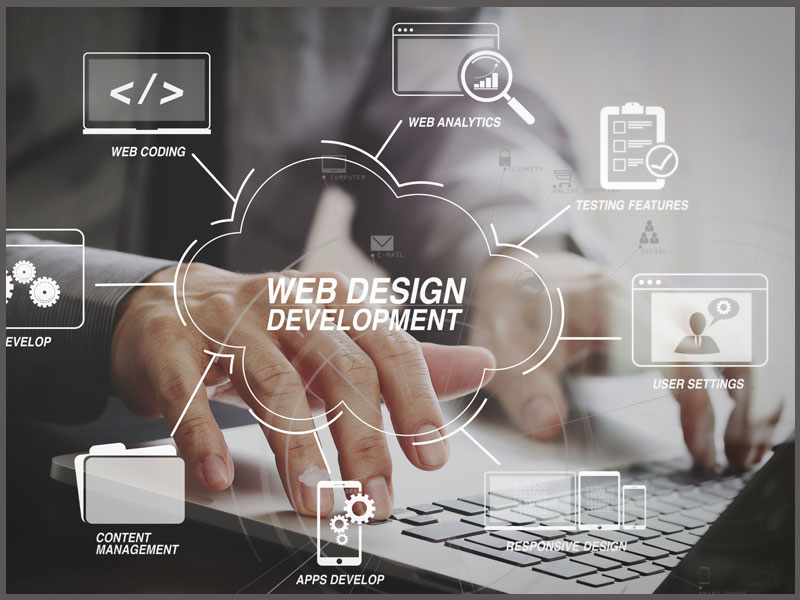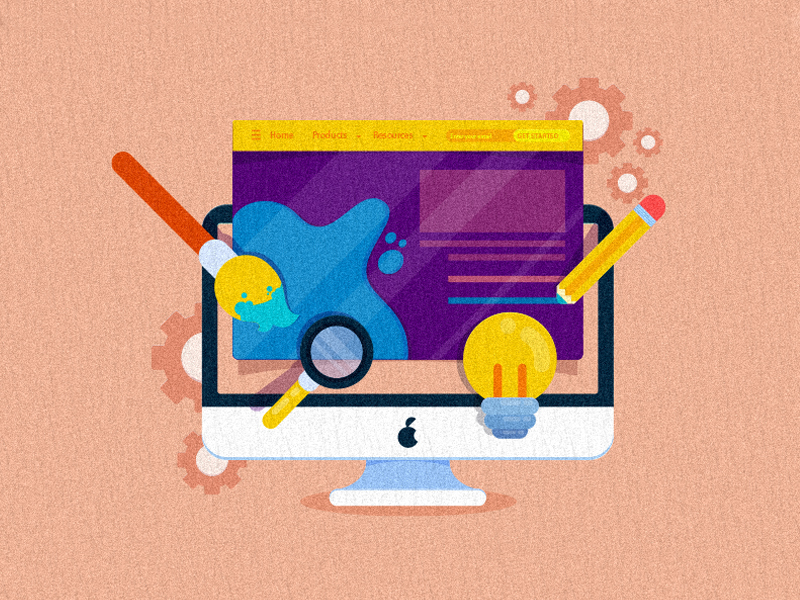The Very Best Types of Website Design to Boost User Experience and Involvement
In the ever-evolving landscape of digital communication, the efficiency of Web layout substantially impacts individual experience and involvement. Different layout strategies, such as minimalist, responsive, and interactive designs, each deal unique advantages that can provide to diverse individual requirements.
Minimal Web Design
As electronic landscapes end up being significantly chaotic, minimal website design has actually arised as an effective technique to improving individual experience. This style viewpoint prioritizes simpleness, concentrating on essential elements while removing unneeded disturbances. By using adequate white area, simple navigation, and a restricted shade scheme, minimal design fosters clearness and guides individual interest to key content.
The core concept of minimal website design is to create a smooth communication for users. By decreasing cognitive load, customers can promptly comprehend info without feeling bewildered. This direct method not only improves use but additionally urges engagement, as site visitors are most likely to discover a website that is aesthetically attractive and easy to navigate.
In addition, minimalist style usually emphasizes typography and images, utilizing these components tactically to convey messages successfully. In essence, minimal Web layout is not just a fad; it is a thoughtful method that recognizes the relevance of user-centered design.
Receptive Web Design
In today's varied digital atmosphere, responsive website design has actually come to be vital for creating a smooth individual experience throughout a plethora of devices. As customers access sites on smart devices, desktop computers, laptops, and tablets, the capability of a web site to adjust its layout and material to different screen sizes and resolutions is vital.
Receptive Web design employs adaptable grids, photos, and CSS media inquiries to make sure that Web content exists ideally, regardless of the device utilized. This strategy not just enhances the aesthetic charm of a website however additionally considerably improves use. Individuals are more probable to engage with a site that offers a constant experience, as it gets rid of the stress of having to zoom in or scroll excessively.
By taking on responsive style, businesses can enhance their visibility and reach a more comprehensive audience. In summary, responsive Web style is a basic technique that boosts user experience, interaction, and general fulfillment.
Interactive Web Layout
Receptive website design prepares for enhancing user experience, however interactive website design takes this a step even more by involving customers in a much more dynamic way - Aligned Position Web Design. By including aspects such as animations, clickable prototypes, and real-time comments, interactive Web layout mesmerizes users, attracting them right into a richer browsing experience
This approach not just fosters involvement however also motivates individuals to explore material actively instead of passively consuming it. Strategies such as gamification, where customers earn benefits for completing jobs, can substantially boost the time invested in a website and improve overall fulfillment. Interactive features can simplify intricate info, making it extra enjoyable and absorbable.

Including interactive design elements can also result in higher conversion prices, as individuals are more likely to involve with a website that actively involves them. Aligned Position Web Design. Inevitably, interactive website design get redirected here changes user experiences into memorable trips, making certain that site visitors return time after time
Apartment Layout
Identified by its minimalistic approach, flat design emphasizes simplicity and functionality, removing unnecessary elements and concentrating on vital functions. This style ideology focuses on use, making certain that users can navigate interfaces with simplicity and effectiveness. By utilizing a tidy visual, level layout eliminates the clutter typically located in a lot more luxuriant styles, thereby enhancing individual emphasis on web content and functionality.
The hallmark of flat layout exists in its usage of vibrant shades, straightforward typography, and geometric shapes. These aspects add to a visually appealing interface that is both approachable and contemporary. Furthermore, flat style promotes a feeling of clearness, allowing individuals to determine essential actions and information without disturbance.
In addition, flat design is especially effective in receptive website design, as its simpleness translates well across different devices and display sizes. The lack of elaborate appearances and gradients minimizes packing times, which is essential for maintaining customer interaction. As electronic landscapes proceed to evolve, level style stays a relevant option for creating user-friendly internet sites that improve overall experience. By focusing on essential attributes, flat design not just meets customer requirements but also urges seamless interaction, making it a vital part of efficient website design strategies.
Flexible Website Design
Adaptive website design tailors the customer experience by creating several dealt with layouts tailored to various screen sizes and tools. Unlike responsive style, which fluidly changes a solitary design, flexible layout employs distinctive designs for details breakpoints, making sure ideal discussion on various platforms. This strategy permits designers to concentrate on the special features of each device, enhancing usability by supplying specifically what users need based upon their context.
Among the main advantages of adaptive website design is its capability to enhance load times and performance. By offering customized material and images that fit the user's tool, internet sites can lessen data usage and boost loading rates. This is especially advantageous for look what i found users with slower connections or minimal data plans.

Furthermore, adaptive style promotes a more regulated and consistent branding experience. Since designers produce numerous layouts, they can guarantee that the aesthetic elements align with the brand name's identification throughout different platforms - Aligned Position Web Design. This leads to a natural customer experience, enhancing interaction and advertising customer their website retention
Conclusion
Minimalist design fosters clearness and focus, while responsive style guarantees versatility throughout various devices, promoting access. Collectively, these design approaches contribute to the development of easy to use environments that not just enhance fulfillment however also drive higher conversion prices, emphasizing their critical relevance in modern Web layout methods.

Minimal layout cultivates quality and emphasis, while receptive design ensures adaptability across different gadgets, promoting access. Jointly, these layout comes close to add to the production of straightforward environments that not only improve complete satisfaction however likewise drive higher conversion rates, highlighting their important relevance in modern Web layout strategies.